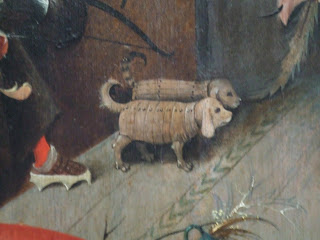Presumably a demand exists for this kind of obsessive detail (records of who worked on and signed off on each concertina from the factory; costs of materials, sales records; payments to the employees). Does that worry you? It worries me.
Charles Wheatstone* designed the concertina as an alternative to the accordion** and then kept refining it; the Horniman collection holds several hundred concertinas, documenting all his variant designs.
* Also inventor of Wheatstone's Bridge, intended to link the Isle of Wight to mainland England.
** the Parisian Guild of Annoying Cafe Entertainers had patented the accordion, and charged exorbitant royalties for its use.
Bonus Horniman blogging:
Wheatstone was not the only musically-creative physicist of the time. "Maxwell's Demon" was a new organ pipe, invented by Maxwell for the premiere of Liszt's Faust Symphony. Thomas Young was well on the way to inventing the glockenspiel, only he was side-tracked by his ideas about deciphering Egyptian hieroglyphics. Meanwhile in Germany, Helmholtz was collaborating with Wagner on a new kind of "stealth tuba" intended to slip past English defenses.
Is it true that Wheatstone's dying wish was for his skin to be tanned and used for the bellows of his last and greatest concertina design, the culmination of his life's work, now held in a locked room at the Horniman and shown only to genuine scholars? I could not possibly comment. Nor could I speculate on the kind of warped patriotism that would cause someone to be tattooed on every covered inch of skin with repetitive images of Queen Victoria without clothes.
Bonus Bonus Horniman blogging:
This stuffed walrus has been voted "Pinniped Most Resembling
Bonus³ Horniman blogging:
Giant Tuba, designed by Lord Kelvin to recapture the British lead in brass-instrument technology. This was after Erskine Childers wrote his espionage novel "The Riddle of the Sounds" to call the public's attention to the threat of German sonic supremacy.













